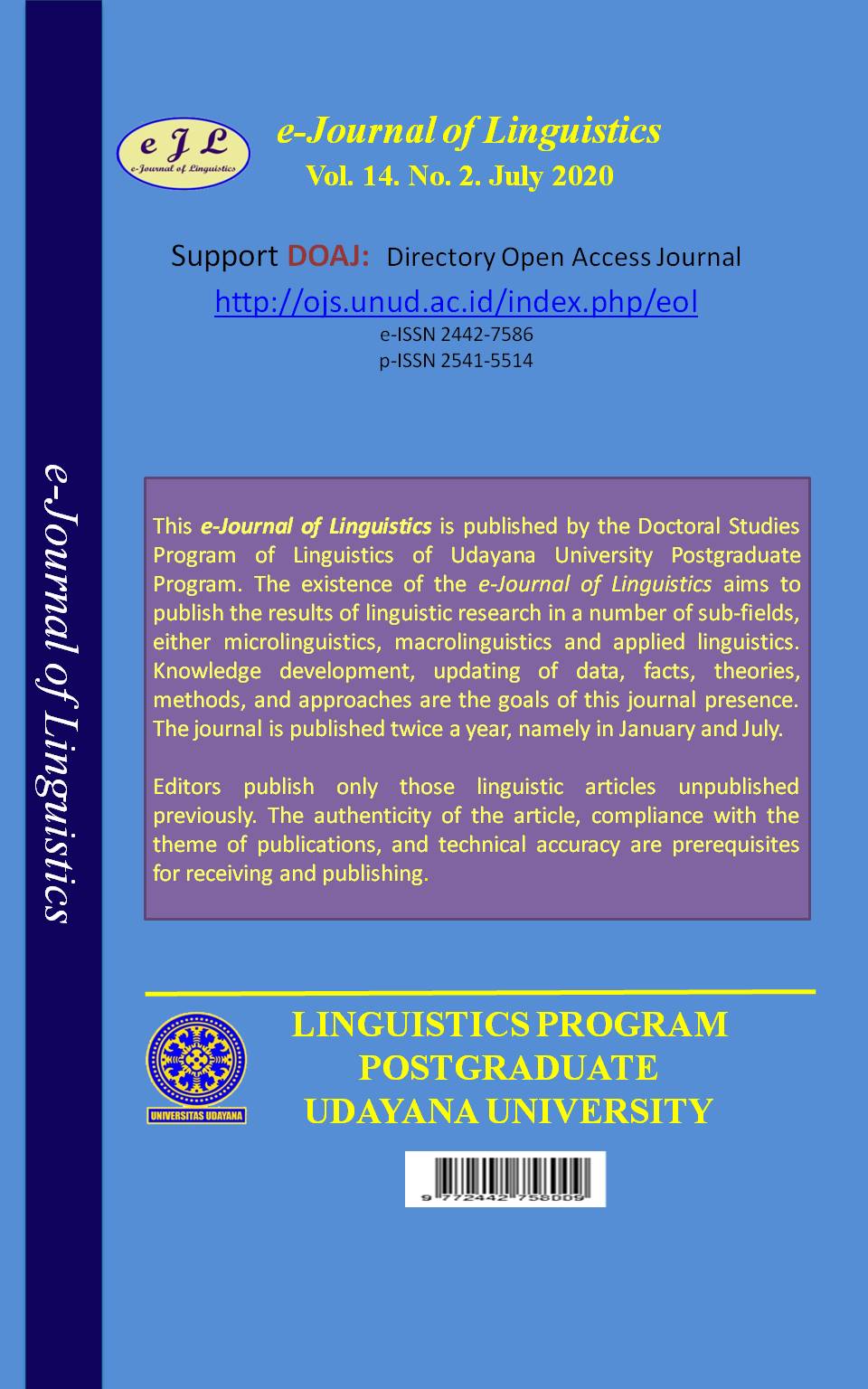Passive and Antipassive in Sasak
Abstract
This paper deals with the constructions of passive and antipassive in Sasak Kuto-Kute dialect (SKD) related to valency decrease. The study involved 70 verbs proposed by Malchukov and Comrie (2010) and applying the theory of typology linguistics from Dixon (2012) for data analysis. The finding showed that passive in this dialect can appear in three forms: the use of morphological marking (confix ke- -n), syntactic marking (preposition siq ‘by’) and no markings at all. For the last form, the construction can only be detected through the movements of the arguments with the case being limited to A with singular pronouns (ku ‘I’, diq ‘you’ and ia ‘s/he’), and first plural pronoun (kami ‘we’). The syntactic passive marker in SKD is very productive and more common compared to the morphological marker. As for antipassive, in this dialect the construction was found to be formed only through morphological markings, which involved the use of nasal prefixes such as meny- and me- and confix ng- -ang as the AP markers.
Downloads
References
Dixon, R. M. W. and Alexandra Aikhenvald. 2000. Changing Valency: Case Studies in Transitivity. Cambridge: Cambridge University Press.
Dixon, R. M. W. 2012. Basic Linguistic Theory. Volume 3: Further Grammatical Topics. Oxford: Oxford University Press.
Hanafi, Nurachman. 2006. Problema Bahasa Indonesia. Mataram: Mataram University Press.
Johandi, Lalu Mohamad. 2017. An Analysis of Sasak Syntactic Structure on the Forms of Passivization as Used in Ngeno-Ngene Dialect at Rarang Village of East Lombok. The Indonesia Journal of Language and Language Teaching (IJOLT). Vol 2, No. 2. pp. 60 – 61.
Malchukov, Andrej and Bernard Comrie. 2010. The Leipzig Valency Classes Project's Database Questionnaire Manual. http://valpal.info/public/valencydbquestionnaire manual.pdf (accessed 26/5/2018).
Muhid, Abdul. 2014. Passive Construction in Sasak. Humanitatis (Journal on Language and Literature). Vol 1, No.1. pp. 29 – 38.
Palmer, F.R. 1994. Grammatical Roles and Relations. Cambridge: CUP.

This work is licensed under a Creative Commons Attribution 4.0 International License











